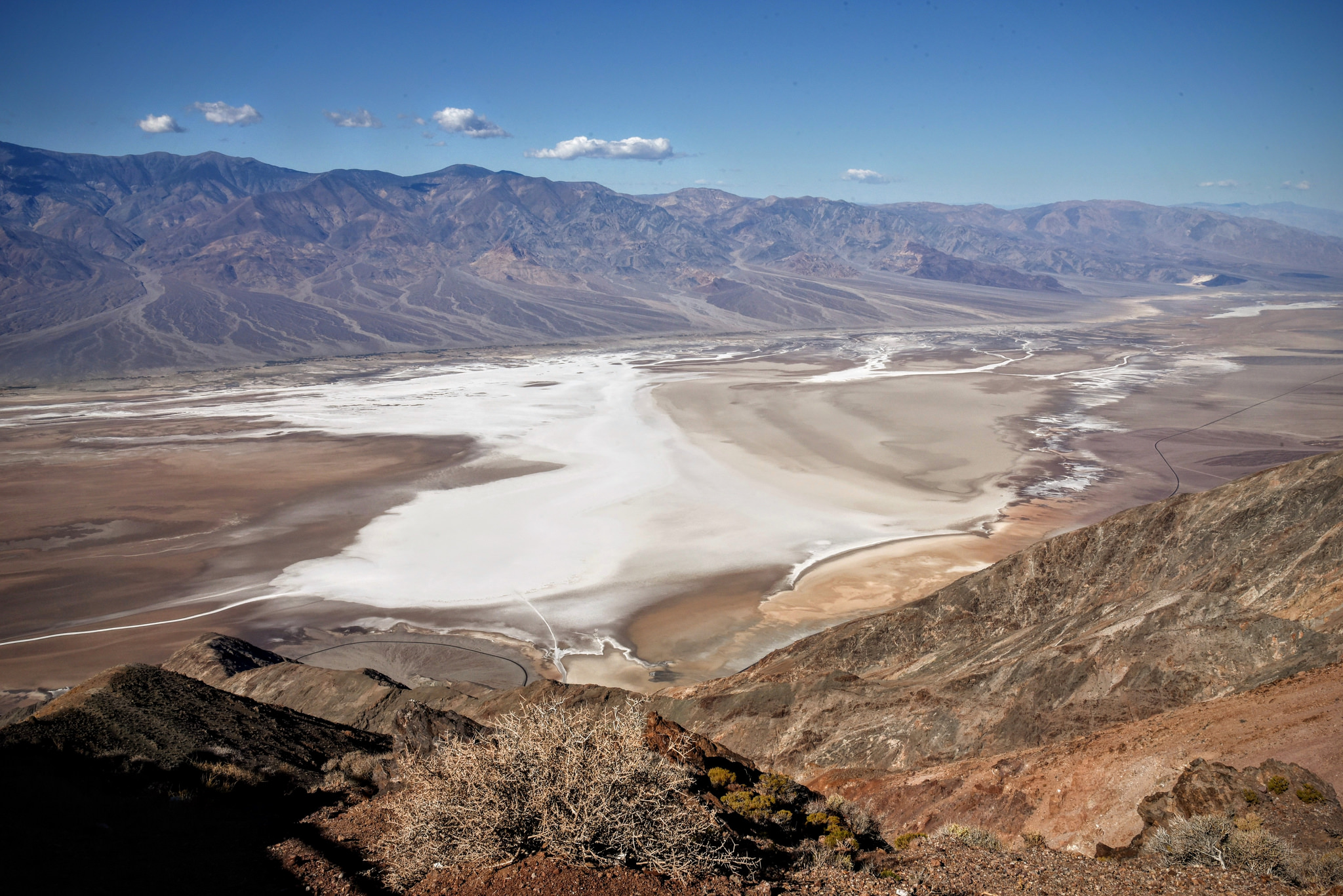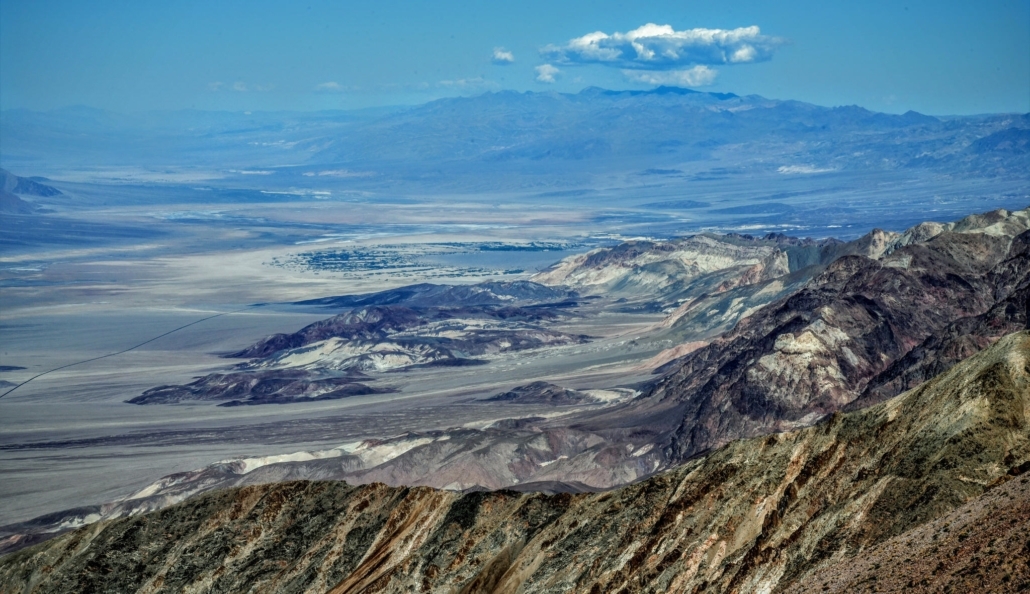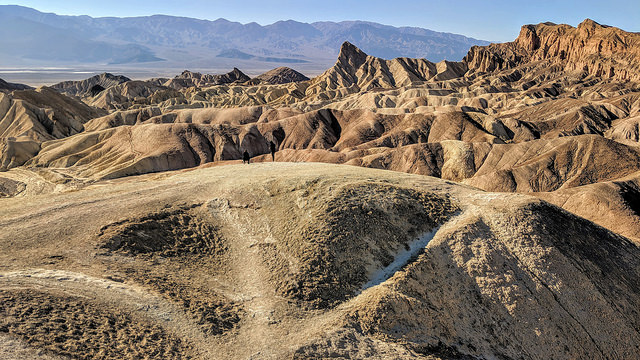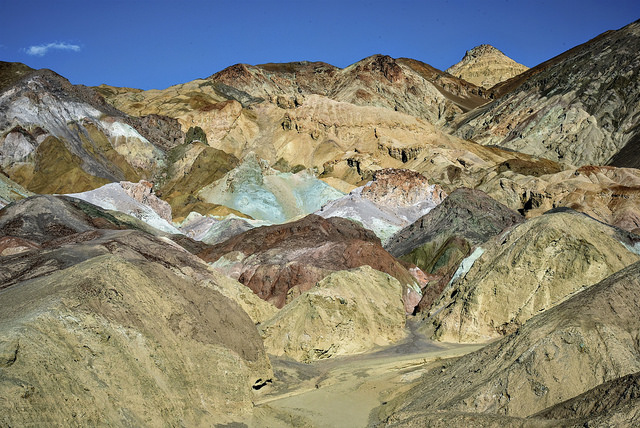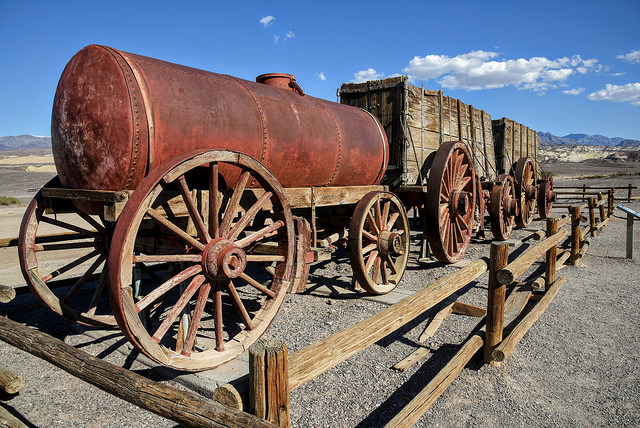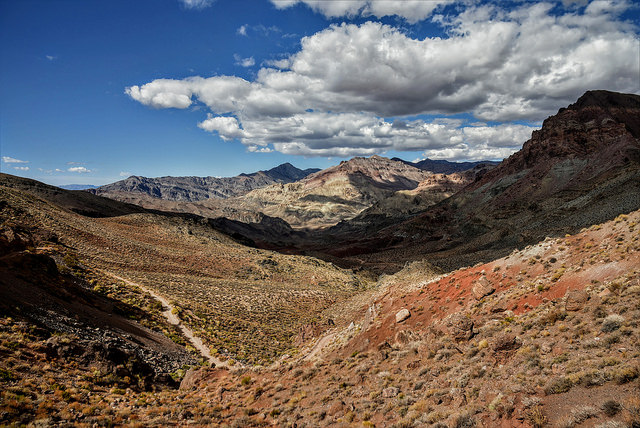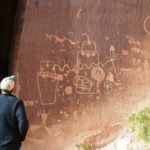Geology – (Death Valley and Mojave Desert) East-central Sierra Nevada, Death Valley area, and Mojave Desert. Consists primarily of sandstone, limestone, conglomerate, hornfels, and marble. Includes some rocks of Triassic and Pennsylvanian age, and some rocks of uncertain age.
In response to the shifting tectonic plates, strike-slip faults developed in Death Valley. Between two strike slip faults, tension gashes opened up, forming the modern basins of Death Valley. The rocks that would become the Panamint Range were stacked on top of the rocks that would become the Black Mountains.
The present landscape was shaped between 5 million and 35 million years ago, during the Cenozoic Era. After faults formed in the earth’s crust, exceptional folding and volcanic action uplifted the mountain ranges and lowered the valley floor,creating a graben.
Why is it called Death Valley – Death Valley was given its forbidding name by a group of pioneers lost here in the winter of 1849-1850. Even though, as far as we know, only one of the group died here, they all assumed that this valley would be their grave.
History – The valley yielded gold and silver in the 1850s, and in the 1880s borax was discovered and taken out by mule-drawn wagons. The valley was much publicized by the American adventurer Walter Scott ( “Death Valley Scotty” ), and it remains a popular tourist attraction.
How old is Death Valley – The natural environment of the area has been shaped largely by its geology. The valley is actually a graben with the oldest rocks being extensively metamorphosed and at least 1.7 billion years old.
Wildlife
• Desert Bighorn Sheep. • Desert Cottontail Rabbit. • Roadrunner. • Mojave Fringe-Toed Lizard. • Kit Fox.
Highest Point – Telescope Peak (11,049 ft)
Lowest Point – Badwater Basin (-282 ft) Dead Sea is -1,371 ft
How big is Death Valley – Death Valley is about 140 miles (225 km) long, trends roughly north-south, and is from 5 to 15 miles (8 to 24 km) wide. The park is 3.4 million acres or 3,000 square miles.
Hottest temp recorded – The weather station at Furnace Creek in Death Valley where the hottest temperature ever recorded, a whopping 134 degrees Fahrenheit (56.7 degrees Celsius), was reached on July 10, 1913. Hottest temp ever recorded.
Coldest month – Death Valley holds the record for the hottest place on earth. Oddly enough, 1913 was also the year that saw Death Valley’s coldest temperature. On January 8, the temperature dropped to 15°F (-10°C) at Furnace Creek.
Mining – Since the 1848 discovery of gold in California, Death Valley has experienced over 140 years of boom and bust mining. From the 1880s to the early 1900s, mining was limited and sporadic in the Death Valley region. Many of these early mining districts met with a notable lack of success.
Borax – After discovery of Borax deposits here by Aaron and Rosie Winters in 1881, business associates William Tell Coleman and Francis Marion Smith subsequently obtained claims to these deposits, opening the way for “large-scale” borax mining in Death Valley.
Borax has been around for years and was originally discovered in Tibet in dry lake beds. It was commonly used during the 19th century for laundry and other cleaning purposes. Also known as sodium borate, Borax today is still used for many cleaning purposes as well as many other tasks.
Precipitation – Average Precipitation. The National Park Service also lists Death Valley as the driest place in North America, with annual rainfall averaging only 1.92 inches. Most of what little rain that falls in the valley comes between January and March, with February as the wettest month, averaging just over a third of an inch.
Plantlife – Annual precipitation varies from 1.9 inches on the valley floor to over 15 inches in the higher mountains. Vegetation zones include creosote bush, desert holly, and mesquite at the lower elevations up through shadscale, blackbrush, Joshua tree, pinyon-juniper, to subalpine limber pine and bristlecone pine woodlands.

